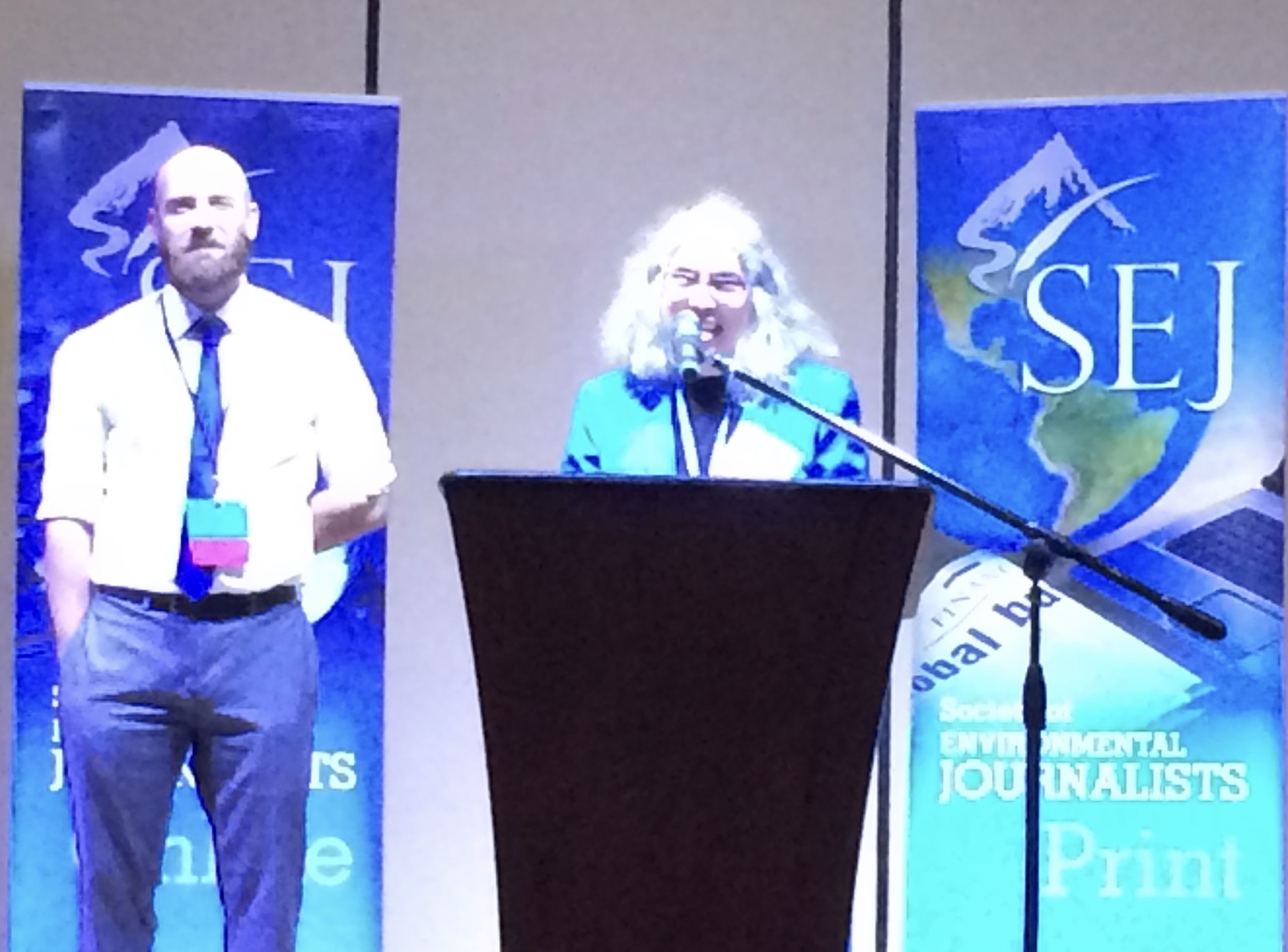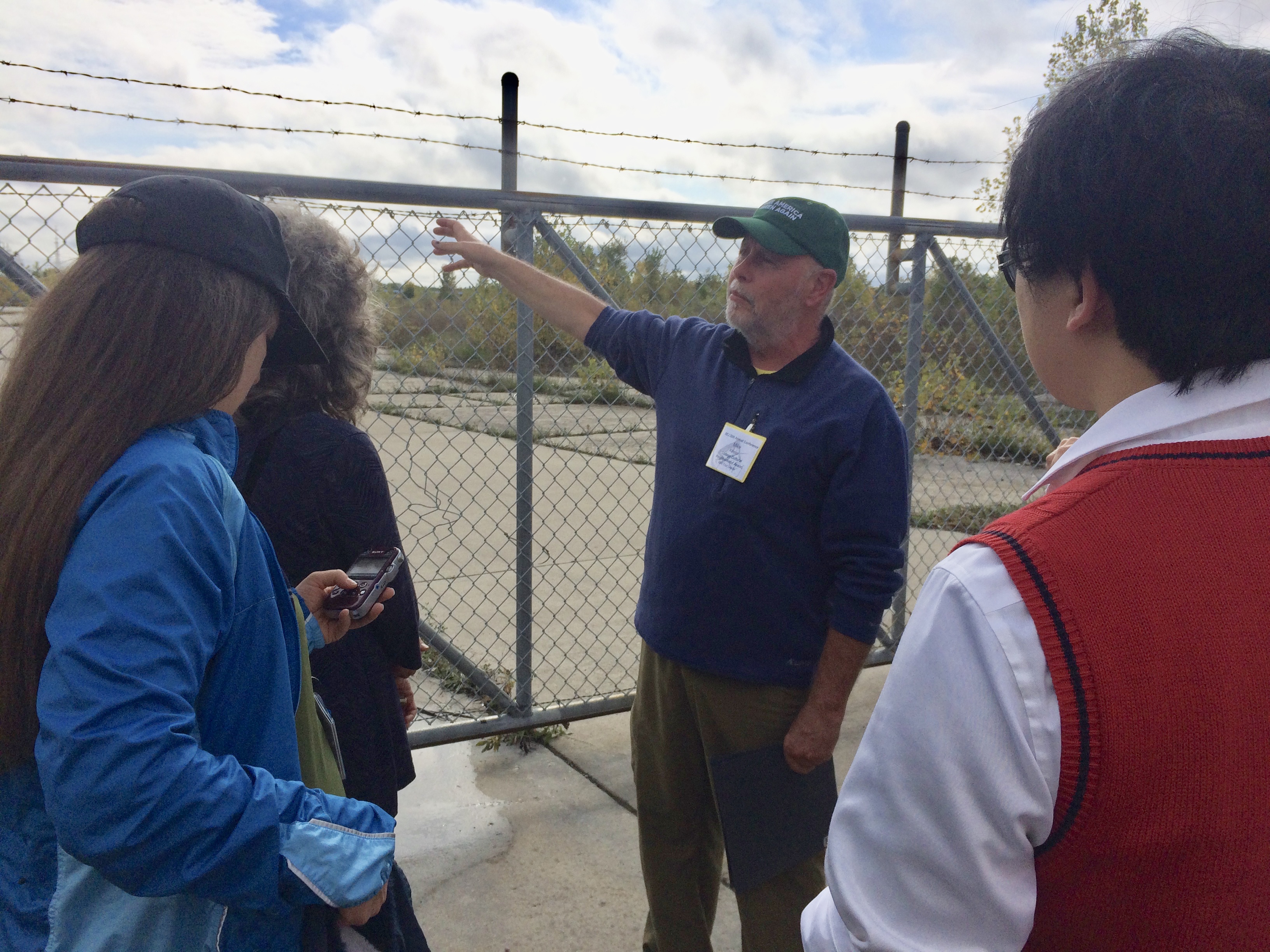By Jan Worth-Nelson
As 700 journalists and other attendees departed from downtown Flint after a five-day conference of the Society of Environmental Journalists last weekend, conference organizers said they hoped they plowed the ground for better environmental coverage — particularly about the Flint water crisis and related stories of environmental injustice. Community residents who participated, including water activists sought out by conference planners, called it “encouraging.”
Built on the theme “Fresh Water: Fresh Ideas,” the conference was the SEJ’s 28th and was co-hosted by the University of Michigan – Flint.
“This has been a historic conference for the Society of Environmental Journalists,” conference co-chair Emilia Askari said over breakfast at the Flint Institute of Arts the last day.
“We have never gone to a city that has been in the middle of an environmental health crisis like this one, and also a city that the national news media has failed in its duty,” Askari said.
“I was really excited to hear that there were going to be so many journalists that were going to be here, kind of doing a mea culpa, saying ‘we didn’t quite cover this right’,” said Trina Downer of Mt. Morris, an activist who spoke on indigenous rights and the state of environmental sovereignty.
“There were opportunities for residents to help the journalists understand what they missed and what the problems really were…I was very encouraged about the things that came about during the week that the residents could get their story out, right from their own mouths,” Downer added.

SEJ Conference Co-chairs Brian Bienkowski and Emilia Askari on opening night (Photo by Jan Worth-Nelson)
To Askari, a journalist and educator at the University of Michigan -Ann Arbor and a research assistant at Michigan State, the SEJ’s experience with Flint was unparalleled.
“We’ve had more engagement and deeper engagement with Flint community members than we’ve ever had at any other conference before. It’s wonderful,” she said. “Our members are pleased with that — some residents were there with us the whole time.”
Conference co-chair Brian Bienkowski, senior editor of Environmental Health News and The Daily Climate, said he was happy to see many journalists having conversations in and out of the conference center.
“We like to pride ourselves as different from ‘parachute journalists’ who just drop in,” he said. The conference included, for example, a number of well-attended tours, giving participants a chance to spend the day with community nonprofit leaders; kayak the Flint River; visit the ForMar Nature Preserve and Arboretum; tour the Delphi and Buick City brownfields and Chevy Commons among others.

One of 35 photojournalists at the Buick City brownfield on Saturday (Photo by Jan Worth-Nelson)
About the tours, Bienkowski said,”A lot of us like to dig into stories — we do that by getting out and smelling the air, touching the ground — that’s the meat of the conference. We want to go home with a story and an idea and a quote. That’s how we do it.”
Bienkowski said he grew up in Detroit so Flint is familiar to him. But he said he still learned a lot about the city’s residents from the week’s events.
“The first word that comes to mind is there seems to be a real sense of resiliency and pride. But there’s also still a lot of pain — we saw a lot of the good and the bad which I think is really important to us, bringing everybody here from around the country.”
Bienkowski described a Wednesday workshop, specifically designed to address race and stereotypes in the news, as starting “at a fevered pitch, with residents wanting to be heard. What we were able to do was both give our sides–we tried to say here’s how we work as journalists, why we come in and why we sometimes leave too fast, and residents gave their side.”
Downer, who said she has “water privilege” because she lives in Mt. Morris and can go home to safe water, attended the Wednesday workshop. It was titled “Heart to Heart with Flint: Racism, Stereotypes and News Narratives.” She said the all-day event was significant.
“They wanted to talk about racism,” Downer said. “Within five minutes, we all kind of looked around and said, You guys kinda need to catch up to us on lessons of how to deal with racism. We’ve already learned, we know how to deal with this. Is it still a problem, yes! Those of us fighting, those of us in the streets, we’ve learned — we don’t all get along, we don’t all even like each other, but there’s a bigger picture and we value the relationships that we’ve cultivated through this fight.”
Asked whether the water crisis will ever end, after days of talking about it with the journalists, Downer said, “It seems like our pain is finally being heard — that really helps.
“Unfortunately, the more pain being expressed in this political climate, the more rude people are getting about that pain, so the light at the end of the tunnel isn’t quite visible yet. None of us can tell how long this is going to go on.”
But “the fighting spirit of Flint is alive and well,” she said, “and that’s not going to go away be any time soon. I don’t see residents capitulating to the gentrification, but I don’t know if they can weather the fight given their health issues and financial issues and the constant state of feeling under attack.
“The political climate of the majority of America is just as wearing as ever and seems just as tenuous,” Downer said. “How long until the overall society breaks? And then what happens to us? I think the one thing the residents know is that we can’t depend on anybody else — we have to do this for ourselves.”

Flint resident and College Cultural Neighborhood Association President Mike Keeler with SEJ photojournalists at the Delphi brownfield (Photo by Jan Worth-Nelson)
The conference’s dozens of seminars, workshops, plenary sessions and tours covered climate change, the history and future of the car, the future of news, water wars, energy issues, gentrification, reducing waste, dealing with plastic, deregulation under the Trump administration, wind power, PFAS contamination. It offered the chance for participants to hang out with other writers, walk along the Flint River, pitch their story ideas to editors, and even do a little dancing the last night to the tunes of blues legend Larry McCray.
EVM Editor Jan Worth-Nelson can be reached at janworth1118@gmail.com.



You must be logged in to post a comment.